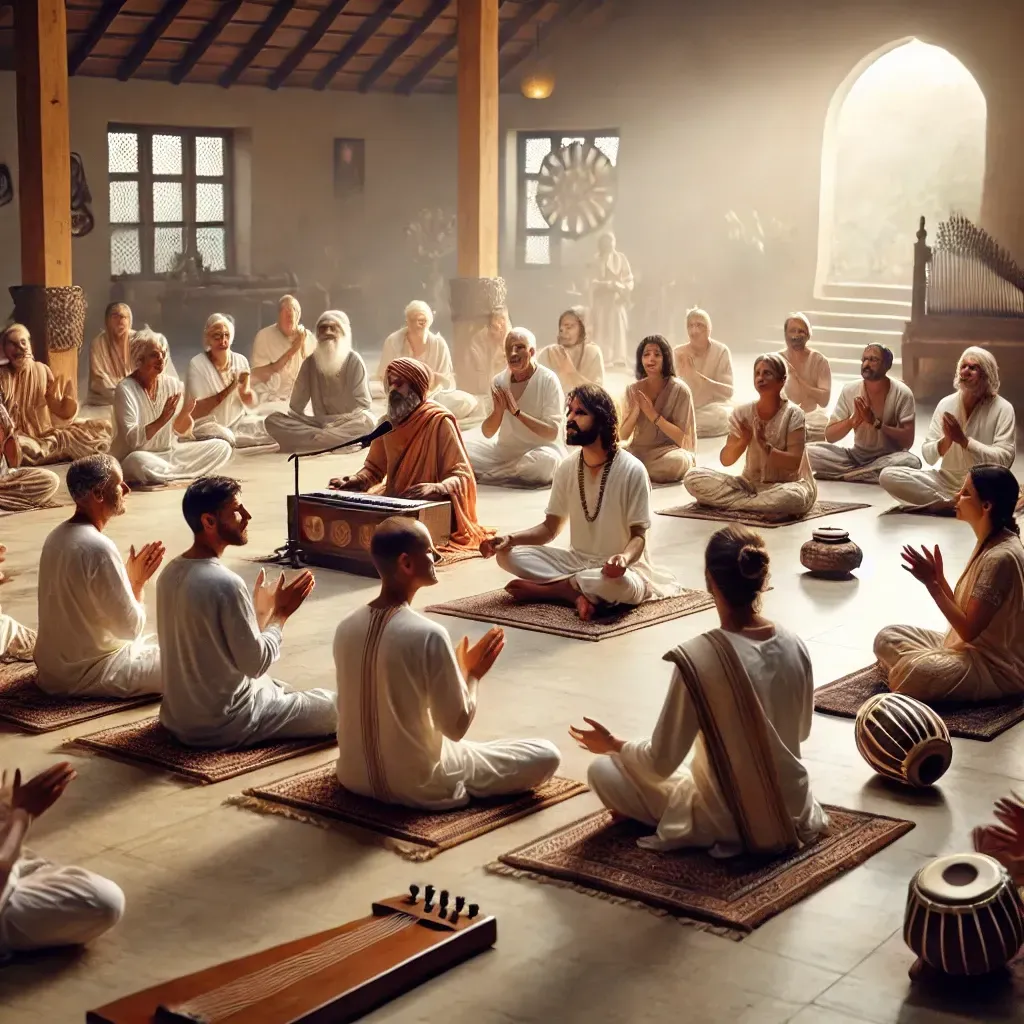Why Vedic Wisdom Still Matters in a Tech-Driven World
A Modern World on Overdrive
We scroll endlessly, bounce between apps, and spend hours plugged into screens. Technology has brought comfort and speed—but also distraction, burnout, and disconnection. In this race for efficiency, many wonder: Are we losing something essential in the process?
Enter the relevance of Vedic wisdom in a tech-driven world—ancient knowledge that speaks directly to modern dilemmas. Rooted in introspection, balance, and clarity, the Vedas and texts like the Bhagavad-gītā offer more than philosophy. They offer tools for living well—even when surrounded by machines.
How Vedic Wisdom Counters Mental Overload

In a hyper-connected world, mental noise has become the new normal. Notifications, emails, algorithm-driven content—all compete for our limited attention. While tech helps us work faster, it rarely helps us think deeper.
Vedic teachings, however, encourage the opposite. Through concepts like sāttva (clarity and calmness), dhyāna (meditation), and viveka (discrimination), we learn to pause, reflect, and reconnect with our inner self.
“From wherever the mind wanders due to its flickering and unsteady nature, one must bring it back under the control of the Self.”
— Bhagavad-gītā 6.26 (Read here)
Embracing a Timeless Value System in a Rapidly Changing Society

Modern success is often defined by numbers—salary, likes, followers. But the Vedic perspective redefines success as stability of character, clarity in purpose, and compassion in action. These aren’t outdated ideals; they’re missing links in modern life.
Vedic wisdom in a tech-driven world helps us question what really matters. It invites us to cultivate dharma (duty), satya (truth), and ahimsa (nonviolence) in how we live, consume, and connect.
“One who is not envious but is a kind friend to all living entities… is very dear to Me.”
— Bhagavad-gītā 12.13 (Read here)
Real Calm in a World of Digital Noise

Scrolling doesn’t calm us. It stimulates us. Yet what we truly need is rest—not just for the body, but for the mind. The Vedas emphasize inner peace through mantra meditation, regulated lifestyle (āhāra-vihāra), and mindful speech.
When practiced even briefly, these habits reduce digital dependency and increase emotional resilience. That’s why practices like chanting Hare Krishna, guided Gita reflections, and early rising are gaining popularity among modern youth.
Moreover, these techniques don’t ask you to renounce tech—but to use it with awareness, not addiction.
Community Over Comparison: A Shift in Culture

Social media subtly promotes comparison over connection. But the Vedic model emphasizes satsanga—gathering with those who uplift you. This ancient concept is deeply relevant for today’s lonely youth generation.
In a world where everyone performs for likes, Vedic wisdom offers real community—built on growth, not validation. Whether through group discussions, temple programs, or online satsangs, these spaces remind us that we’re not alone.
“Just by associating with the wise, one becomes wise.”
— Śrīmad-Bhāgavatam 3.25.25 (Read here)
Tech Is a Tool—But Vedic Wisdom Is the Compass
Technology can amplify our lives, but it doesn’t guide them. Algorithms can track habits—but not purpose. That’s where Vedic wisdom in a tech-driven world becomes essential. It doesn’t reject technology—it gives us the clarity to use it without losing ourselves.
Through inner clarity (atma-vidyā), daily grounding (sādhanā), and sacred texts like the Bhagavad-gītā, we learn not just how to live—but how to live well.
The Future Needs Ancient Roots
In a world that’s evolving faster than ever, what grounds us becomes more important than what accelerates us. That’s why Vedic wisdom isn’t a relic of the past—it’s a roadmap for the future.
From Silicon Valley professionals to college students, more and more people are turning to timeless truths for modern clarity. And perhaps that’s the true sign of progress—not just smarter devices, but wiser humans.

Recent Comments